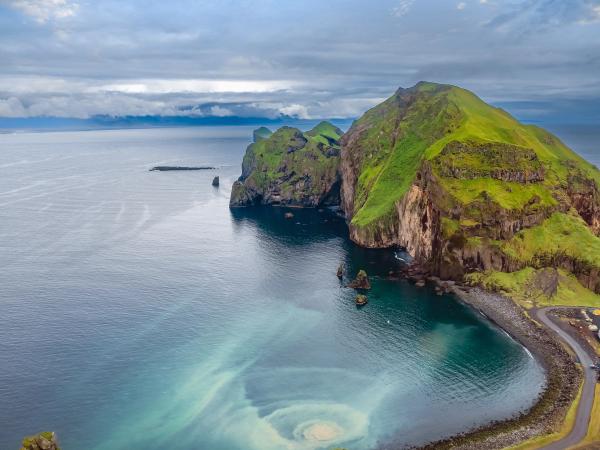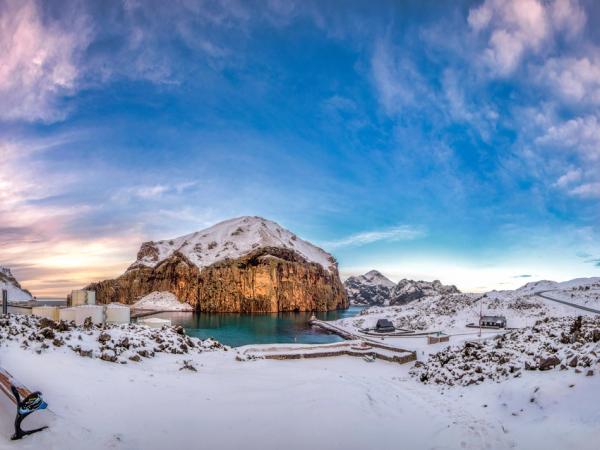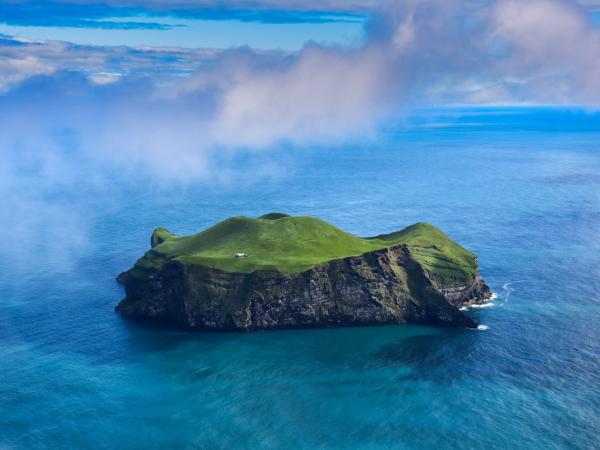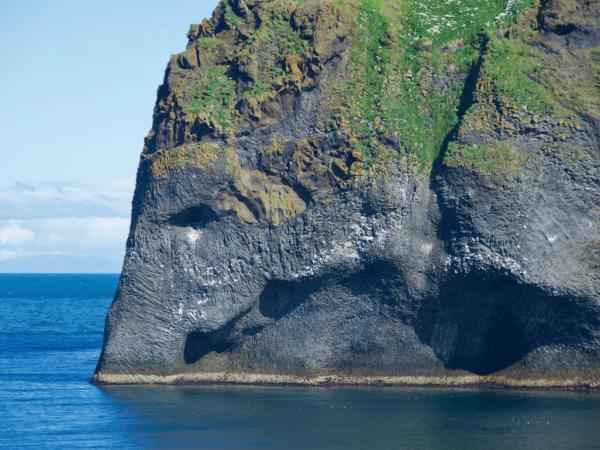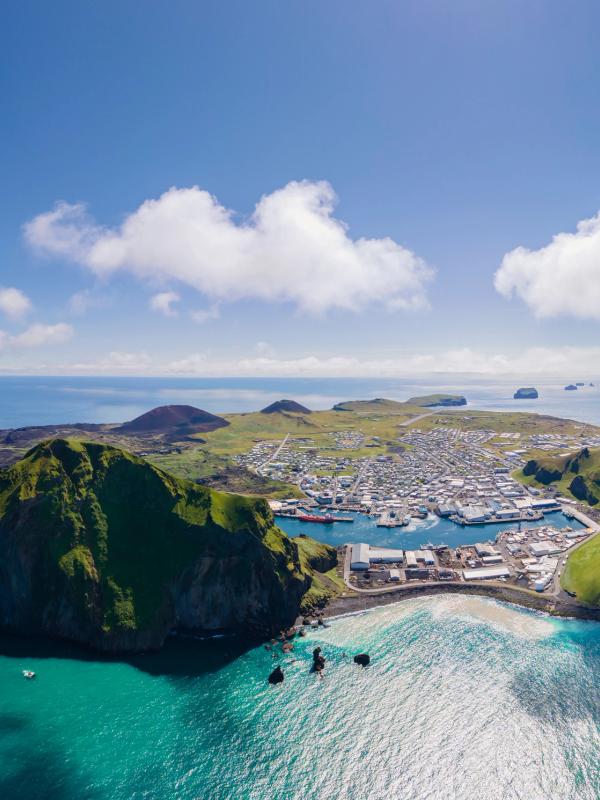
The Westman Islands: Iceland's Volcanic Paradise
You're standing on the edge of a volcano that erupted just 50 years ago, watching thousands of puffins fly around sea cliffs, while a small town sits below you — a town that was buried under lava and rebuilt from nothing. This is the Westman Islands, Iceland's hidden gem that more people are starting to discover.
The Westman Islands, or Vestmannaeyjar in Icelandic, aren't like other tourist spots. This group of volcanic islands off Iceland's south coast gives you experiences you can't get anywhere else: hiking on ground that's still warm from eruptions, helping with the world's cutest wildlife rescue, and exploring a town that literally came back from the ashes.
Key takeaways
- 16 volcanic islands with only one that people live on (Heimaey, population 4,300)
- World's biggest puffin colony with 1 million birds (best viewing from May to August)
- Easy day trip from Reykjavik - takes 30-40 minutes by ferry or a short flight
- Special experiences like Puffin Patrol, volcano hiking, and boat tours through sea caves
- Recent history includes the 1973 volcanic eruption that changed the main island
- Best time to visit is May-August for good weather, puffin watching, and outdoor stuff
- There are accommodations for all budgets, all on Heimaey island.
What Are the Westman Islands?
The Westman Islands are like Iceland's outdoor science lab — 16 islands and about 30 rocks spread across the North Atlantic, all created by underwater volcanoes over the past 10,000-12,000 years. These islands are still growing today.
How They Formed
The islands sit where Iceland's crust is pulling apart. Each island started as an underwater volcano, building up layer by layer until it broke through the ocean surface. The newest addition? Surtsey Island erupted from the sea in 1963 and kept growing for four years — the longest volcanic eruption Iceland has on record.
Then 1973 happened. Eldfell volcano suddenly came to life on the main island of Heimaey. For 155 days, it shot out lava and ash, adding over 2 square kilometers of new land and almost destroying the town. The locals fought back by pumping seawater onto the lava to cool it down and save their harbor — and it actually worked.
Today, you can walk up Eldfell in about 15 minutes and feel the ground still warm under your feet. It's like stepping on a piece of recent history.
The Story of the Islands
The islands got their name from captured Gaels (the Norse called them "Westmen") around AD 875.
But the real story is about survival. In 1627, Barbary Pirates kidnapped 234 people from the island, with some bought back from Algiers later. But nothing matches the 1973 eruption, when all 5,000 people had to leave overnight as lava threatened to bury their homes.
What happened next shows how tough these islanders are. They didn't just rebuild — they came back stronger. The community created traditions like the Puffin Patrol, where kids rescue baby puffins that get mixed up by town lights and help them get back to the ocean. It's wildlife protection meets community spirit, and visitors can join in.
Life today
Life on Heimaey today moves at its own pace. The 4,300 residents know each other well — it's the kind of place where everyone waves when they pass on the street. Most people work in fishing, which remains the backbone of the economy, or in tourism, which keeps growing each year. Kids go to the local school, families gather at the swimming pool after work, and everyone pitches in during puffin season to help rescue the lost babies. The harbor stays busy with fishing boats coming and going, while the ferry brings new visitors almost daily. It's a mix of modern life with deep traditions, where its volcanic history shapes everything from where houses are built to how the community comes together.
The annual Þjóðhátíð festival in August turns the whole island into Iceland's biggest party, with thousands of people camping in Herjólfsdalur valley. No cars allowed, bonfires everywhere, and it feels like one huge family gathering.
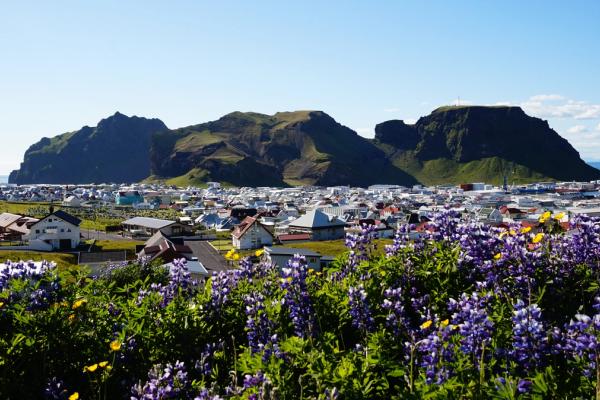
The 16 Islands
Only Heimaey has people living on it, but each island is different. Some have single hunting cabins for traditional bird egg collecting (called Spranga), others are just for wildlife. The empty islands make good boat trip destinations, with sea caves, bird colonies, and cliffs that go straight up from the water.

Heimaey: The Main Island
Heimaey will be your base — a 13.4-square-kilometer island that fits a lot into a small space. The town of Vestmannaeyjabaer has colorful houses, a busy harbor, and everything you need, from restaurants serving locally-caught puffin to a swimming pool heated by underground hot springs.
The island is so small that you can walk or bike between places. Eldfell volcano sits on the eastern side, while Heimaklettur (the highest point at 283 meters) has tough hikes with ropes to help you climb. The western coast has Elephant Rock — a natural rock formation that looks exactly like an elephant — and Stórhöfði, officially Europe's windiest place and your best spot for watching puffins.
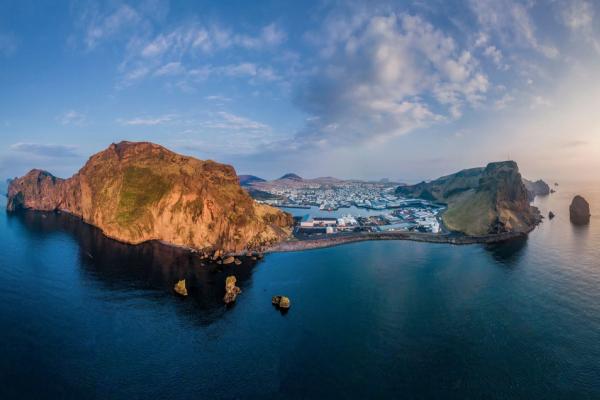
Location & Getting to the Westman
The Westman Islands sit about 7.4 kilometers off Iceland's south coast, close enough for easy trips but far enough to feel like a different world.
Ferry: The Most Popular Choice
The Herjolfur ferry runs from Landeyjahöfn port three to four times each day, taking 30-40 minutes each way. It's reliable, doesn't cost too much (around ISK 1,500-2,000 one-way), and can take cars if you want to drive around.
Book through Visit Westman Islands, especially in summer when lots of people want to go. The ferry ride is an experience in itself: it has excellent views of mainland Iceland's glaciers and the islands' cliffs coming up from the sea.
Flying: Fast, but the Weather Dependant
Eagle Air and Bakki offer flights from Reykjavik (25 minutes) or Landeyjahöfn (10 minutes). It's quicker but costs more, and flights get cancelled when the weather's bad. The views from above are pretty good, though — you can see the whole archipelago spread out below you.
Getting Around
Heimaey is small enough to walk everywhere, with most things to see within 1-2 kilometers of the town center. Bike rentals are popular and practical for covering more ground. Car rentals work for families or people who have trouble walking, though parking can be tight during festivals.
For the empty islands, boat tours are your only way to get there. Several companies offer everything from quick puffin-watching trips to full-day adventures exploring sea caves and smaller islands.
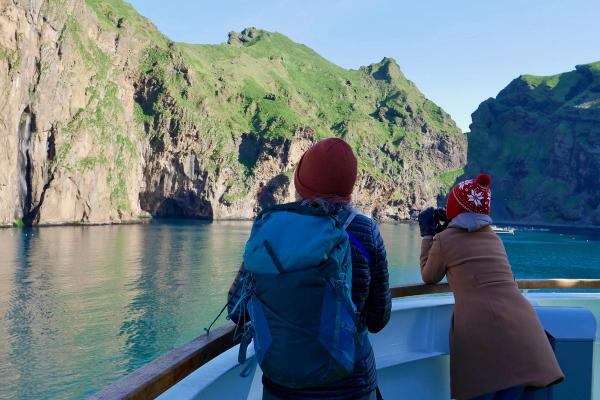
When to Visit
Timing matters here more than in most places, mainly because of the puffins and weather.
Puffin Season: May to August
This is the best time. Over 1 million Atlantic puffins nest on the cliffs from late April through mid-August, with the most activity in May-July. Early morning (6-8 AM) and late evening (6-8 PM) are best for watching since puffins are most active when they're fishing.
Summer brings extended daylight (up to 20 hours in June) thanks to the Midnight Sun, so you can fit more activities into one day.
Weather
Iceland's weather changes fast, but the Westman Islands add their own challenges. Stórhöfði holds the European record for wind speed, so bring layers and waterproof stuff no matter when you visit. Summer temperatures stay around 10-12°C, while winter is surprisingly mild (0-2°C) because of ocean currents.
It rains a lot year-round, with about 1,400mm per year, so that waterproof jacket isn't optional.
Festival Time
August brings Þjóðhátíð, Iceland's biggest outdoor festival. It's great if you like music, bonfires, and camping with lots of people, but forget about quiet hiking or wildlife watching during this time. Book everything months ahead if you want to go.
Things to Do in the Westman
Being a geological marvel, the Westman offers plenty to do and visit.
Hiking: Volcanoes and Views
- Eldfell Volcano: The hike you can't miss. The 10-15 minute climb from the western parking area takes you to the edge of the volcano that changed the island in 1973. The trail is easy enough for families, though loose rocks mean you need decent shoes. At the top, touch the ground that's still warm and get 360-degree views of the islands.
Go at sunset for the best lighting and bring a jacket that blocks wind — it gets breezy up there.
- Heimaklettur: The island's highest point (283 meters), is much harder. This 45-60 minute climb uses ladders, ropes, and chains to get up steep parts. It's not for everyone — skip it if heights bother you or you have trouble moving around — but the views from the top are amazing. There's even a guestbook where you can leave proof you were there.
- Stórhöfði and Herjólfsdalur: These easier hikes have good coastal views and access to puffin watching spots. Stórhöfði works well for families, with marked trails and viewing areas.
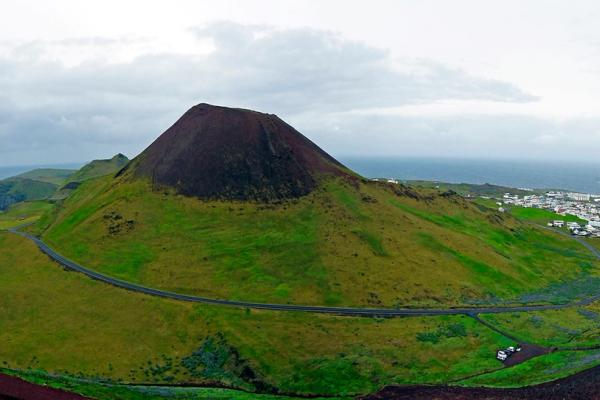
Puffin Watching: The Main Thing
The Westman Islands have the world's biggest Atlantic puffin colony (close to 2 million), and watching these colorful "sea clowns" is something you'll remember. Stórhöfði puffin lookout is the best land spot, easy to reach by car or a short walk.
Boat tours make it even better. You'll see puffins flying to and from their nests, often just a few meters away. Tours usually last 1-2 hours and include views of sea caves and smaller islands you can't reach on foot. Book through Viator or Visit Westman Islands, especially during the busy season (June-July).
Puffin Patrol, July to September: Here's something special. Help locals rescue baby puffins. Young puffins sometimes get confused by town lights and fly inland instead of out to sea. Each evening, families collect these "pufflings" and release them from the harbor the next morning. It's free, eco-conscious, suitable for families, and organized through the Sæheimar Museum.
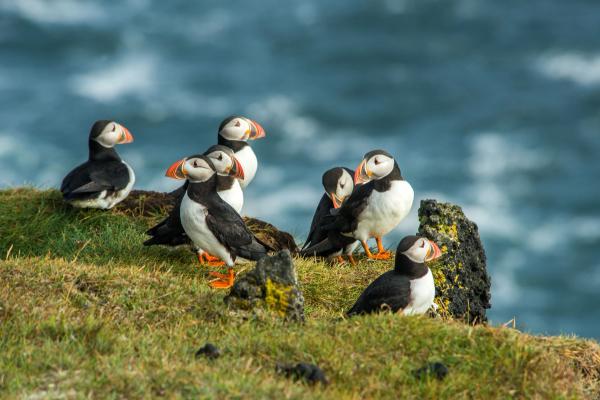
Cultural Places
- Eldheimar Museum: Built around a house dug out from 1973 lava flows, this museum tells the story of the eruption that changed Heimaey. Interactive displays and audio guides (English and German available) bring the event to life. Plan for 1-1.5 hours. It's perfect when it's raining. Entry for adults is $27.
- Beluga Whale Sanctuary: Located in Klettsvík Bay, this open-water sanctuary houses beluga whales in a natural setting. Educational tours focus on ocean conservation and whale behavior. Standard entry is $20, and it jumps to $43 if you want a guided tour. Book ahead, especially for summer visits.
- Sæheimar Museum/Aquarium: A smaller place showing local wildlife, including two puffins that live there, and displays about island geology. It's where Puffin Patrol activities are organized and is perfect for families.

Special Activities
- Elephant Rock: This natural rock formation on the western coast looks exactly like an elephant drinking from the sea. It's a quick stop but good for photos, especially at sunset. You can see it from land, but I’d recommend you take a boat tour to check it from up close. Plus, all those tours include puffin watching and more.
- Sea Kayaking: Paddle around Heimaey's coastline or go to smaller islands. The water is calm enough for beginners, and you'll see cliffs and caves from a different angle. Rentals and guided tours are available through Visit Westman Islands.
- Boat Tours to Sea Caves: Fast RIB boats take you through caves and around smaller islands you can't walk to. These 1-2 hour tours are exciting and good for taking photos.
- Golf with a View: The Vestmannaeyjar Golf Club near Elephant Rock has 18 holes surrounded by volcanic landscapes. It's one of Iceland's most scenic courses, though wind can make it tough. It’s a really unique place to play golf if you’re into it.
Where to Stay in the Westman Islands
All places to stay are in Heimaey, within walking distance of the harbor and the main things to see.
Hotels & Guesthouses
- Guesthouse Sunnuhóll: Located at Vestmannabraut 28, this guesthouse has private rooms with shared bathrooms and communal kitchen facilities. It's basic but clean, and the communal atmosphere is great if you want to meet other travelers. Book early for summer, as dorm beds fill up fast. Prices for a double room are $180, which is not very cheap, but people love the place.
- Hótel Vestmannaeyjar: An established hotel in the town center with 22m² standard rooms and 15m² compact options. All rooms have private bathrooms and modern amenities, and the price includes breakfast and spa access with hot tubs and sauna — perfect after a day of hiking. It’s more expensive than the Inn, with prices ranging from $220 for a single room to $360 for double rooms.
- Westman Islands Inn: A modern, centrally-located hotel just 400 meters from the harbor. Family rooms, studios, and apartments with kitchens make it good for groups. It offers clean rooms, friendly staff, and fair prices. Book through their website or Booking.com. Prices range from $150 to $374 (per room), depending on the season and type of room.
- Guesthouse Hamar: A cozy middle option with private rooms and shared facilities. The small size means personalized service from local hosts, and it's walking distance from the town center attractions. Prices for double rooms are around $170.
Budget Options
- Glamping & camping: If you’re looking for something special that won’t break the bank, this is the place for you. This quirky accommodation is made up of cozy camping barrels and triangle houses. Toilets and kitchen are communal, but they’re clean and well-eqquiped. It’s not like being in a hotel, but it’s quite comfy. Prices are around 130$ for two people (yes, that’s budget here in Iceland).
- Aska Hostel: Probably the most affordable accommodation in the islands. Rooms are small but fair, and everything else is shared. There’s also a living room and a restaurant where you can meet other travelers.
Luxury Places
- Ocean Villas & Pier Apartments: High-end villas and apartments near the harbor with private balconies, ocean views, and fully equipped kitchens. Some units have hot tubs. Perfect for special occasions or groups wanting privacy and premium amenities. Book well ahead through Westman Islands Luxury. Villas can accommodate up to 8 people, while pier apartments can house up to 7. Pier are a bit cheaper that villas.
Self-Catering and Camping
Many apartments and cottages are available through Booking.com and Airbnb, good for families or longer stays. For budget travelers, camping is available at Herjólfsdalur valley (the same spot used for the Þjóðhátíð festival) with basic facilities and good cliff views.
Booking Tips: Reserve 3-6 months ahead for if you go in the summer, especially during Þjóðhátíð when places to stay become hard to find. Winter has lower prices but fewer options, as some places close for the season.
Planning Your Trip
If you, like most people, are planning to go to the Westman on a day trip, it makes sense to plan most things ahed to make the most of your time.
Sample Day Trip Schedule:
- 8:55 AM: Arrive by ferry
- 9:15 AM: Hike Eldfell (45 minutes)
- 10:30 AM: Puffin watching at Stórhöfði (1 hour)
- 12:00 PM: Lunch at Einsi Kaldi
- 1:30 PM: Eldheimar Museum (1 hour)
- 3:00 PM: Boat tour for caves and more puffins (1.5 hours)
- 5:00 PM: Elephant Rock photo stop (30 minutes)
- 7:00 PM: Swimming pool and hot tubs
- 8:30 PM: Leave on evening ferry
What to Pack: Waterproof jacket and pants, warm layers, good hiking shoes, binoculars for puffin watching, a camera with zoom lens, and a sense of adventure.
Tips:
- Many visitors wish they'd stayed overnight — think about it if your schedule allows
- Book boat tours ahead, especially during peak puffin season
- Bring cash, as some smaller places don't take cards
- Check weather forecasts and be flexible with outdoor activities
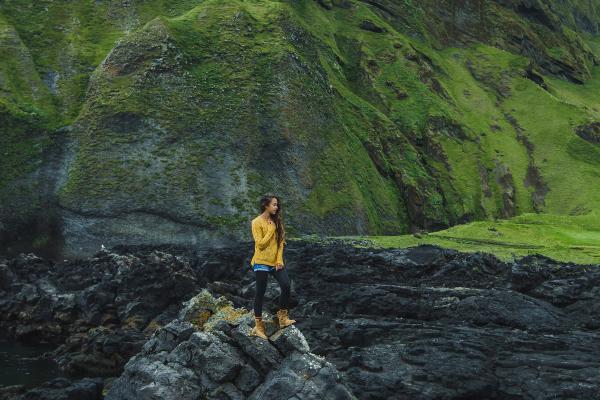
Your Gateway to Iceland's Wild Side
The Westman Islands give you something you can't find anywhere else in Iceland — or the world, really. Where else can you hike a 50-year-old volcano, rescue baby puffins, and explore sea caves carved by centuries of Atlantic storms, all in one day?
This isn't just another place to check off your Iceland list. It's where geology happens in real-time, where a whole community rebuilt itself from volcanic ash, and where over a million puffins show you that nature always finds a way. Whether you come for a day trip or stay longer to really experience it, the Westman Islands will give you stories you'll tell for years.

